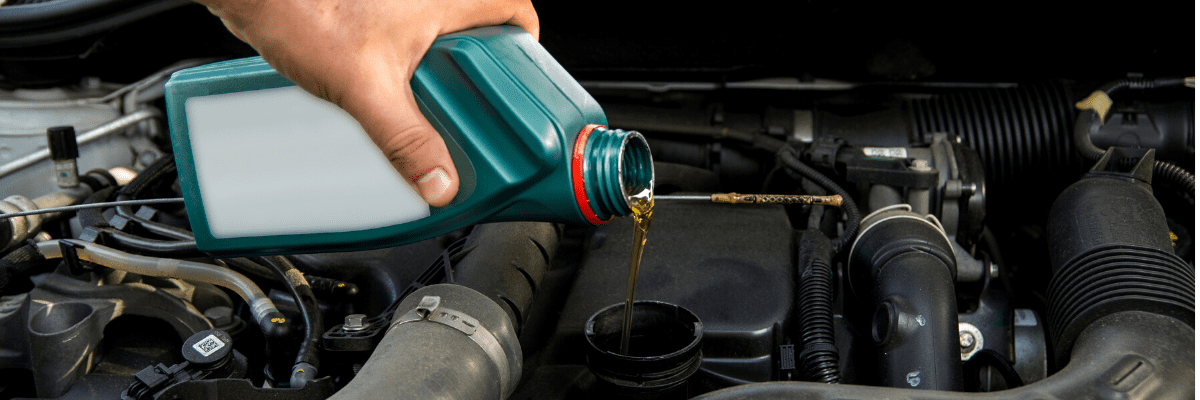
Motor Oil Explained; Viscosity, Types, Grades and Perfect One for Your Engine
Remember the days when all articles about engine motor oil started with “Do you know that engine oil is the blood of your vehicle?” or “Choosing a proper engine oil can be a daunting task…”
Well? It may have been hard to choose, but it won’t be after you complete this 10-minute reading.
Lines below will teach you about oil types, the best oil on the market, how to check oil level in the engine, how to choose the right oil for your car, truck or cargo van, and how to add oil to the engine.
Oil Purpose and How It Works?
Oil’s main purpose is to lubricate the vehicle engine to avoid frictions and metal-to-metal contact, keep the engine running smoothly, cool down metal parts and protect the engine from damage by anti-wear system.
Oil is stored in the oil tank. It is pumped by oil pump around the engine by the oilway circuit. Along with the oil pump, a vital part of the vehicle, thus, is the oil filter. The filter removes all dirt and small particles and supplies the engine with clean oil. This way, the oil protects the engine by reducing harmful deposits.
As you can already see, regular maintenance with good oil and filter is a MUST if you want to have a reliable vehicle that can give you the performance you need – for many years. Low-quality oil can cause severe damage to your engine.
What Oil Does my Car Take? Engine Oil Types Explained
There are so many oils on the market that even experienced drivers have difficulties choosing the right one for their vehicle. If you find yourself in the Automotive department in a local Walmart, you will be overwhelmed with so many choices. Colorful stickers screaming from shelves buy me, on sale, the best product in 2018, drivers 1st choice, for diesel engines, for high-performance engines, etc. The situation is not better in specialized car service stations either.
Let start from the basic.
Basic motor oil classification is:
- Full Synthetic oil; It’s made from synthetic oil molecules, distilled and purified using the highest level of oil additives. Oil is developed for modern high-performance engines with high torque and a lot of This oil type is the most expensive one (and the most expensive to produce), but it offers the best performance, better fuel economy, and protection. It has the same, constant, performance no matter the driving style, the conditions, temperature and year season. Full synthetic oil lasts longer, two to three times, compared to other oil types. Who should use it? Cars and pickup trucks with high engine capacity, big V6 or V8 engines capable of giving high-performance drive. Suggested oil change interval for full-synthetic oil is between 7,500 and 10,000 miles or one year (whichever comes first) and it depends on the driving style and conditions. Some manufacturers like Mobile 1, which is used by Jaguar and Toyota, recommend oil change after 15,000 miles.
- Synthetic Blend oil; This is a blend of full synthetic and mineral oil. It has a lower price than the synthetic oil and it’s slightly more expensive than the mineral oil. It offers better performance than the mineral oil, but not as good as full synthetic oils. Synthetic blend oil has good resistance to oxidation, but performance at high temperatures can be questionable. Who should use it? New and used sedans and light trucks with mid-sized gas and diesel engines, like 2.0L V4. Suggested oil change interval for synthetic blend oil is between 5,000 and 7,500 miles. You should change oil regardless of the mileage if it’s been used for more than 12 months.
- Mineral (conventional) oil; It has the lowest percentage of oil additives for protecting engines. Mineral oil is used in simple, low-performance engines which use old technology. Mineral oil has the lowest price of all oil types and many car dealers use it in bulk. It is made from naturally occurring crude oil, that is refined in order to remove impurities. Who should use it? Small-sized engine cars produced before 2000. Their simple and outdated technology doesn’t need oil with synthetic molecules and additives. Suggested oil change interval for mineral oil is 3,000 miles or six months.
- High-mileage motor oil; This oil is specially developed for engines that have a high mileage number in their odometer. Since a lot of vehicles on US roads have more than 100,000 miles in odometer, oil manufacturers have grabbed the chance and created oil for engines with high-mileage. What is the difference between standard oil and high-mileage motor oil? High-mileage oil has a seal conditioner in it. This conditioner reduces oil swelling and improves engine flexibility. Plus, it has a higher dose of antiwear Who should use it? Old cars and trucks with high mileage. Suggested oil change interval is around 5,000 miles or six months.
Important: Always check the vehicle driver’s manual for oil type recommendation or check online. If a car manufacturer has recommended a synthetic blend oil, stick with it and don’t use mineral oil. For cars with old and simple engines is OK to pour full-synthetic oil, but your engine doesn’t need it and it will be a waste of money. Never mix two different types of oil.
Oil Viscosity and Grades
Next thing you need to know about oil is viscosity. Fluid viscosity is the measure of its resistance to stress. You can easily understand viscosity on honey and water example. The honey has a higher viciously than water.
Oil viscosity corresponds to oil thickness. It is rated at 0° F (-17.8 degrees Celsius) and 212° F. Viscosity is notated using the “XW-XX” classification. The number preceding the “W” (winter) rates the oil’s flow (viscosity). The lower the number, the less the oil thickens in cold weather. The second number describes how thick the oil is at normal temperature.
Engine oil grade is developed by SAE, The Society of Automotive Engineers.
Oil Viscosity Example
Thin oils reduce friction in engines and help engines start quickly during cold weather. Thick oils, on the other hand, are better at maintaining oil pressure at high temperatures and heavy loads.
Oil with a 5W-30 has less viscosity compared to 10W-30. Oil with a 5W-30 grade thins out more quickly at high temperatures as compared to oils with a 5W-40 grade.
In winter and cold days, you should choose an oil with low winter viscosity, since thin oils reduce friction in engines and help engines start quickly during cold weather. During the summer or if you are driving in a hotter region, choose an oil with higher viscosity. So, when comparing two oils it is important to know where they will be used.
Usual motor oil classification by viscosity: 0W-20, 0W-30, 0W-40, 5W-20, 5W-30, 5W-40, 10W-60, 10W-40, and 15W-40.
NOTE: To properly choose oil viscosity always look at the car owner’s manual and check manufacturer recommendations. Engine oil should not be too thin nor too tick since you need both – protection and performance. Using the wrong oil can increase emissions, jeopardize fuel economy and even damage engine.
Oil Viscosity Chart
Here is engine SAE oil viscosity chart. For those who want to learn more about oil viscosity, we recommend reading this article.

Read the Labels and Learn Oil Specifications
You have probably noticed different stickers on plastic oil bottles. They represent oil specifications that define several standards, like heat resistance, wear protection, strength, cleanliness, etc., and more importantly, oil type and for what engine oil can be used. Four main oil specification systems are given by following institutions, most important one for the US is API:

- API (American Petroleum Institute); API’s specification consists of two letter rating that begins with S, that stands for Service (Petrol engines) or C, that stands for Commercial (Diesel engines). The second letter appoints oil’s quality, beginning with letter A. The further along the alphabet, the higher the oil’s quality. Latest API’s standard is SN from 2011. Categories from SA to SH are obsolete. Currently in use are SJ, SL, SM, and SN.
- ILSAC (International Lubricants Standardization and Approval Committee); This committee consists of the US, European and Japanese car manufacturers. They often share specifications with API, but the focus is on emission system and fuel economy. Standard applies to SAE 0W-20, 5W-20, 0W-30, 5W-30, and 10W-30 viscosity grade oils. Latest specification is ILSAC GF-5, ILSAC GF-6 is under development. To recognize that an oil meets ILSAC requirement, API developed a starburst certification mark.
- ACEA (The Association Des Constructeurs Européens D’automobiles) is a set of standards requested for all oils that are sold in Europe. Specification by ACEA can fall into four categories: A for petrol engines, B for diesel engines, C for engines that are catalyst compatible and E for heavy-duty diesel engines.</li
- OEM (Original Equipment Manufacturer); This set of standards is developed and approved by car manufacturers and are very important for cars under warranty. Check car manufacturer website to find out what oil brands passed OEM tests.[/item]
NOTE: Always read the labels on the oil you buy. Don’t buy oil that is not in alignment with the latest standards.
Diesel Engine Oil
Is there any difference between oil for petrol and diesel motors? Both oils are very similar, but there are a few differences, and they are very important. The first one is that the diesel engine oil has higher viscosity. Second, diesel engine oil has more additives per volume. Especially the anti-wear additive that can damage gasoline catalytic converter and cause devastating effects on vehicle’s performance. This is the reason why you shouldn’t use diesel engine oil in your petrol vehicle.
How to know if an oil is meant for diesel engines? You already know the answer if you read this article from the beginning. To repeat, find the API’s label on oil package and look for letter “C”. C stands for commercial or compression ignition. Simple as that.
Engine Oil Additives
Except for oil base (petroleum hydrocarbon base from crude oil), oil you pour in the vehicle consists of several oil additives:
- Oil anti-wear additives,
- Detergents that keep the engine clean and corrosion (rust) free,
- Dispersants and antioxidants that help the oil to flow in oilway,
- Friction modifiers,
- Oil viscosity ingredients for improving oil performance and reduce oil’s thinning
Overall ratio is 80% of oil base to 20% of oil additives.
Besides oil additives that manufacturers add to oil base before sending out to dealers and retail, there are additives you can buy and improve oil performance. They also have the purpose to clean engine and decrease friction, but most used are viscosity index improvers. But be careful here. Adding more additives then you should lead to severe engine problems and costly repairs.
How to Check Engine Oil?
Checking engine oil is a very easy thing to do and everyone should know how to do it.
The only thing you will need to check engine oil level is a clean towel or a paper tissue. Here are the 5 main steps to follow:
STEP #1 Park your car or truck on an even surface.
STEP #2 Turn the engine off and, if possible, wait until the engine cools down.
STEP #3 Open the vehicle hood and find oil dipstick (usually labeled as Engine Oil and has a yellow cap) and pull it out.
STEP #4 Wipe the dipstick, put it back in the tube, and then pull it out again to have an accurate reading (this step is optional; if the engine is cold,you can skip this step).
STEP #5 Now check if there is oil between the two lines on the dipstick. Sometimes there are two dots or letters L (low) and H (high) or MIN and MAX depending on the car brand. It would be best if there is oil near the top line or a dot that is near the top of the dipstick.
And that is it!
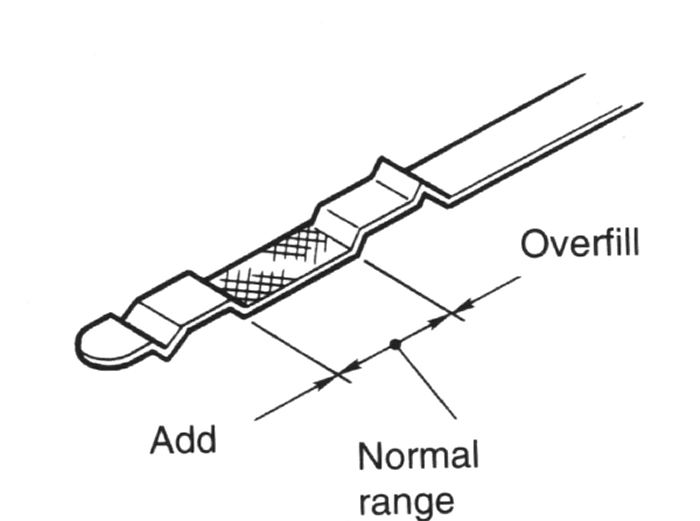
Oil Color
While checking oil level, you need to check oil color and color of the dipstick too. If the oil color is dark brown or black, it means that impurities and metal particles are in it and you should replace it with new one. Oil and oil dipstick need to be clean and shiny. Also, look and smell inside of the tube. If it looks and smells like burnt asphalt, do yourself a favor if you want your car to last.
NOTE: Too much oil in the engine can severely damage your engine part. If your car is overfilled with oil, you’ll need to drain the excess amount of oil before you drive your vehicle again. If you notice asmell of burning oil, smoke from the engine or exhaust pipe stop the car and call service.
Now that you know what oil your car, truck or van take and you know everything about viscosity, it is time to get to know the most trusted oil manufacturers and lubricant brands. All brands mentioned below are present for decades on US market and are recommended by many car makers. They are major players in the business and a proven solution no matter if you need a mineral or full synthetic engine oil.
Many road and laboratory tests and specialized auto magazines studies have shown these are top 5 oil manufacturers today.
Castor Engine Oil
Castrol is a famous racing brand. They have a great history in competitions like WRC and DTM. This British oil manufacturer, established way back in 1899, offers a full range of products for lubricant applications. Castrol’s oils have an international reputation. Product range starts with GTX High Mileage, Magnatec, and Ultraclean. The last and most quality oil from Castrol is Edge.

If you are having a hard time finding owner’s manual and checking what oil your vehicle needs, Castrol prepared a very handy tool for you. Visit oil-selector tool, choose your automaker and model and Castrol will give you the list of all recommended oils for your vehicle. The tool works fine for cars, SUV, pickup trucks, commercial vans, motorcycles, scooters, and quads.
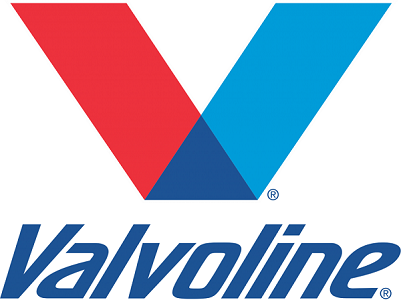
Valvoline Motor Oil
Valvoline is one of the leading worldwide oil and lubricant suppliers. Founded in 1866, Valvoline has a huge dealer network, selling products to more than 160 countries in the world. The company operates and franchises more than 1,100 Valvoline Instant Oil Change℠ centers in the United States.
They offer products for gas and diesel engines as conventional, synthetic-blend and full synthetic oils and other vehicle lubricants. Most selling full synthetic oil in the US is Valvoline MaxLife. This oil is used in Toyota racing cars during famous race 24 hours of Le Man, in France. To see all products visit Valvoline website.
Mobil 1 Motor Oil
What to expect from the brand that has been involved in all important car races for more than century. WRC, NASCAR, Formula 1, WTCC, and famous Dakar Rally are enough to recommend Mobile 1 to drivers who need top performance oil.o.
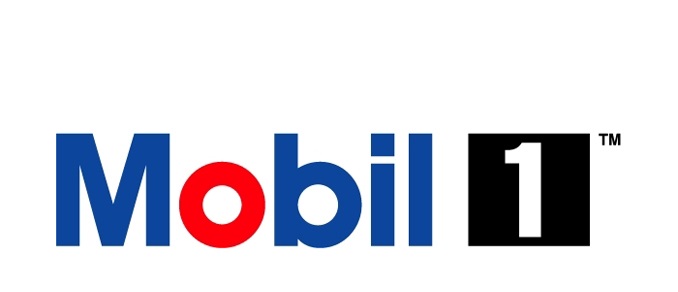
Latest 20,000 miles test across 48 states will demonstrate if Mobile 1 Annual Protection motor oil can protect the engine for incredible 20,000 miles. The technology used behind this oil, according to Mobile 1, can guarantee better oxidation and viscosity control along with maximized wear protection. If you want to follow results of the test, visit official Mobile 1 website.
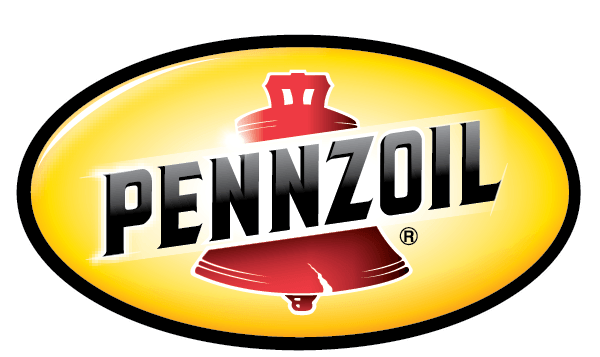
Pennzoil Engine Oil
For most Americans, Pennzoil is a well-known brand. It is one of the oldest industrial companies in the US founded in 1813 in Oil City, Pennsylvania. Pennzoil focus is on synthetic and bland synthetic motor oils. They praise themselves for developing an oil that is responsible for the highest fuel economy. Pennzoil range of fully synthetic oils starts with Platinum and Euro Platinum line. Top of the range is reserved for Ultra Platinum motor oil that is available in several viscosity grades.
Pennzoil is chosen as the most recommended car engine oil by Women’s choice award in 2018. Click here to see complete offer by Pennzoil.
Royal Purple Motor Oil
Royal Purple is a relatively new American oil company, founded 1986. Royal Purple produce oils and oil filters for cars, marine, industrial and racing purpose. The focus is on fully synthetic oils for diesel and petrol engines. Lately, a lot of industry specialized magazines, like Hot Rod, recommended this brand for fantastic results in the fuel economy and engine protection domains.
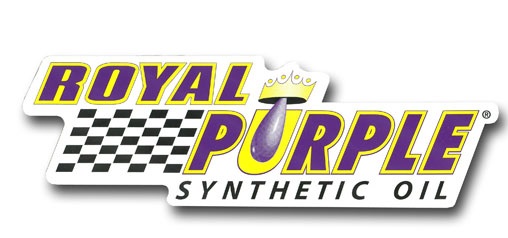
Similar to Castrol, Royal Purple has lubricant advisor. This tool will help you find the right synthetic oil for your car, truck, van, and motorcycle. Choose vehicle sector, make, model and manufacturing year and you’ll instantly see engine and transmission oil recommendation for the desired vehicle.
Along with these 5 brands we would like to mention Elf, Total, Wurth, Shell, Agip, Amsoil, Motul, Lucas, and Repsol. As you can see most of them are European brands, but they all have a dealership in the US and most of them are recommended by leading automakers from Europe, Japan, and the United States.




